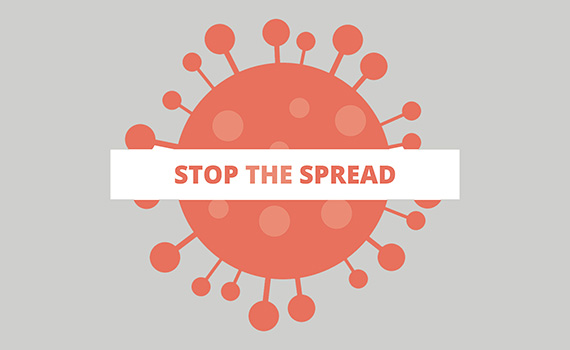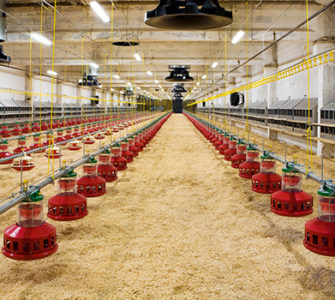Poultry biosecurity has lessons for coping with COVID-19
By Tom Tabler, PhD
Extension Professor
Mississippi State University Extension Service, Poultry Science Department
Mississippi State, Mississippi
While the coronavirus 19 (COVID-19) pandemic continues to disrupt lives around the world, the US poultry industry may be better prepared than most to deal with the situation because it understands biosecurity. Social distancing seems to be the phrase of the day, but social distancing is no more than biosecurity dressed in a ball gown or a coat and tie.
For years, the poultry industry has had procedures in place to protect the health and safety of poultry flocks. Contract poultry growers, perhaps, understand this better than anyone, especially after the avian influenza outbreaks of 2014-2015 and 2016-2017 that made it essential to ramp up biosecurity procedures.
Today, the steps and guidelines Americans are being asked to follow to break the spread of coronavirus in humans are the same steps and guidelines the poultry industry started asking of contract growers years ago. Our industry is well versed in practicing social distancing. Flocks are isolated from human visitors and from other birds to lessen the disease threat. Growers and workers use disinfectant foot baths at the entrance to every poultry house. If they go off the farm, they are asked to change clothes and boots before returning to their flocks.
Simple steps
There’s a lot the human population can learn from the poultry industry’s everyday biosecurity practices that help keep the nation’s poultry flocks disease free. The USDA has created six simple steps that can help lower the risk of disease entering your poultry flock:
- Keep your distance.
- Keep it clean.
- Don’t haul disease home.
- Don’t borrow disease from your neighbor.
- Know the warning signs of infectious diseases.
- Report sick birds.
These same practices pretty much hold true to protecting the entire human flock these days. The poultry industry knows that isolation, traffic control, early identification of illness and sanitation are key. I’m fairly sure that most of the people we see on TV crowded together at parks or on the beach are not contract poultry growers, because those folks know better.
Worthwhile hardships
I gave so many talks about avian influenza and biosecurity in the spring, summer and fall of 2015 that I’m sure folks got tired of seeing me show up. By the time it was over, there were complex managers who knew my presentation as well as I did because they had heard it multiple times. And unless you’re in the middle of a disease outbreak, biosecurity is not the most glamorous or exciting subject for a talk.
The simple fact is, however, that regardless of how boring or troublesome they may seem, biosecurity practices such as social distancing, stay-at-home or shelter-in-place have the desired effect.
When I started writing this article, the number of new COVID-19 cases was beginning to drop, and there was a “flattening of the curve” in many locations. “Flattening of the curve” is another popular phrase today, but it’s a critical milestone that lets officials know we are making progress and that biosecurity principles are working, despite the hardships.
The stay-at-home order really put a damper on my work. I like to walk through chicken houses with growers or sit at the kitchen table with them to exchange thoughts and bounce around ideas instead of talking to a computer screen. I get a lot more out of visiting a complex manager in his or her office or conference room than I do from a phone call.
Here’s another example of the impact COVID-19 restrictions have had on me personally. Last Easter Sunday, Mississippi had about 90 poultry houses damaged or destroyed by multiple tornadoes. The following week, another 30-plus poultry houses were damaged or destroyed by another tornado in the same general area. That’s over 120 damaged or destroyed poultry houses, and for each of those houses there is a grower trying to deal with the aftermath. I have crawled around in poultry houses damaged or destroyed by tornadoes on multiple occasions in both Arkansas and Mississippi in an effort to save trapped birds. This time, all I could do was try to help people online or over the phone. Technology has become the major communication channel for many of us in the wake of the pandemic, and although it’s a wonderful thing in many ways, it can’t replace face-to-face interaction.
No one will be happier than I will be for things to get back to something close to normal. The restrictions and impact on our lives are aggravating, no doubt. My son is one of the millions of folks who’s out of a job these days, thanks to COVID-19.
Flash forward
Flash forward a couple of weeks. COVID-19 biosecurity procedures have been relaxed in some places, and the incidence of infections has started ticking back up — another testament to the value of social distancing and other human biosecurity measures.
I was going to say that things are getting better. I sure hope they are, but we’re clearly not out of the woods yet. So, maintain social distance and employ other human biosecurity measures. We have all got to get back to work. However, we have got to be careful in how we do that.
Use technology to check on your friends, your neighbors and, if you’re lucky enough to still have them, your parents and grandparents.
Do so correctly, and I have faith we will eventually get through this. Stay safe, stay healthy, take care of the chickens, but most importantly, take care of yourself!
Editor’s note: The opinions and advice presented in this article belong to the author and, as such, are presented here as points of view, not specific recommendations by Poultry Health Today.
Posted on June 1, 2020

















